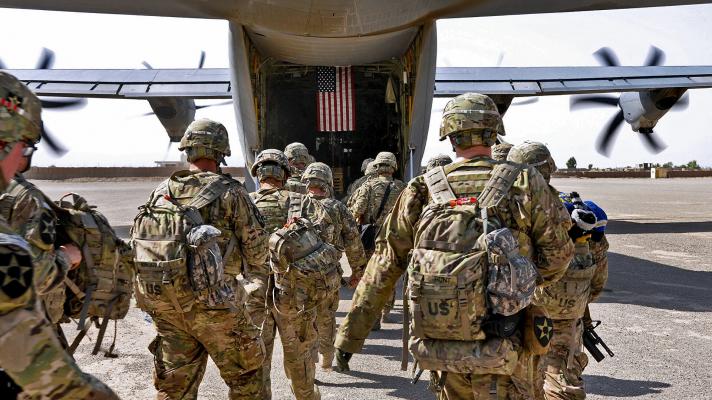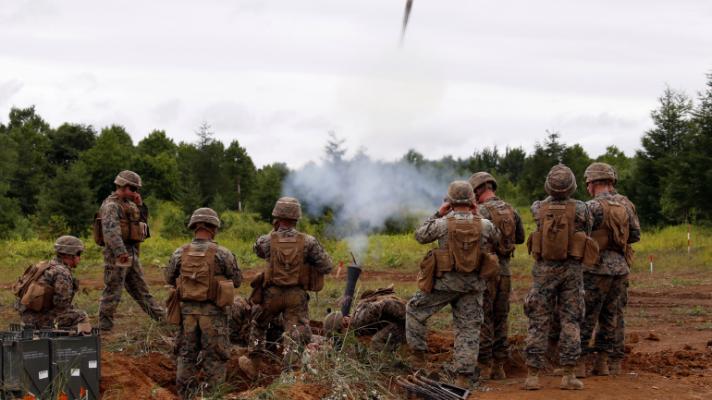On April 14, 2021, President Joe Biden announced that the U.S. military in Afghanistan will withdraw by September 11, 2021. Its departure from the territory has occurred in a disorderly and hasty manner, revealing the failure of the military invasion of twenty years ago.
However, Washington has threatened to prolong the process, as there are many strategic interests at stake in Afghan territory. The Shindand air base on the Iranian border was built there, as well as the Kandahar and Gilman air bases. There are large uranium deposits on Gilman territory. In addition, the Americans will not want to let go of international drug trafficking, because it is in the provinces of Gilman and Kandahar that a large amount of drugs are produced. There are also deposits of lithium and other valuable minerals.
In view of this situation, the Taliban recently warned of the consequences if foreign countries do not complete the withdrawal from Afghanistan by August 31, the deadline set by the U.S. government for the troops to leave.
Where that contingent will go is a question discussed among analysts, with the general consensus being that Washington does not want to completely lose control over what is happening in the region. According to Western media reports, the Biden administration is planning to move some of the military to Afghanistan’s neighboring countries. The U.S. military command considers Central Asia to be the most convenient option.
The evacuation of U.S. troops in Afghanistan raises the question: what is the scale of U.S. military deployment globally?
Tens of thousands of U.S. troops are stationed at military bases in dozens of countries around the world, and the reasons vary from country to country. Patterson Deppen, a member of the editorial board of E-International Relations, mapped the U.S. military presence around the world with the intention of highlighting that the withdrawal in Afghanistan, although in principle an expression of the decline of U.S. bases abroad, does not necessarily mean that military deployment globally will diminish.
On the contrary, the author posits that the bases that are operational will continue “some version of Washington’s forever wars and could also help facilitate a “new Cold War with China.”
MORE THAN 750 BASES IN 80 COUNTRIES
The artícle notes that from Honduras to Australia, Japan, Iraq and Qatar, to Germany and Italy, the U.S. has “more than 750 major military bases implanted around the world,” covering every continent.
Deppen was tasked by Overseas Base Realignment and Closure Coalition (OBRACC) founders Leah Bolger and David Vine to assemble a list of U.S. military bases overseas to focus on future closures of such facilities.
“In addition to providing the most comprehensive accounting of such overseas bases, our research also confirms that the presence of even one in a country can contribute significantly to anti-American protests, environmental destruction, and increasing costs to the U.S. taxpayer.”
According to Deppen’s work, the United States has about 750 military bases in more than 81 countries. It is an extraordinary case among countries that impose their military presence abroad, far above other major military powers, such as Great Britain, France or Spain, which have a few dozen bases distributed around the world.
However, the estimate may fall short. The researcher explains that, because the Pentagon usually tries to hide the presence of some of the military bases it has abroad, it became difficult to accurately determine the list.
In accounting for U.S. enclaves outside its border, Deppen used the Pentagon’s own definition of what a military base is: “specific geographic location that has parcels of land or individual facilities assigned (…) which is or was owned, leased, or otherwise under the jurisdiction of a Department of Defense Component on behalf of the United States.”
Although it allowed a radius of action to be drawn for the investigation, the definition omitted several forms of military presence that did not fit the description, such as small ports, repair complexes, warehouses, service stations and U.S.-controlled surveillance facilities. Also left off the list were nearly 50 military bases that the U.S. government funds directly for the armed forces of other countries, most of them located in the Latin American region, primarily in Central America.
Neither the removal of these sites from the list nor the fact that the U.S. has reduced some military posts in recent years could change the trend of expanding U.S. military presence internationally. The researcher points out that:
- Over the past decade, the number of military bases has been modestly reduced. Since 2011, some “thousand outposts and a modest number of major bases were closed in Afghanistan and Iraq, as well as in Somalia.”
- OBRACC’s David Vine estimated five or so years ago that there were at least 800 military bases in 70 countries, colonies or territories outside the United States.
- The current research shows a slight decrease, with 750 military bases counted, but the number of countries with such facilities has increased.
- “According to our list, U.S. military bases abroad are now scattered in 81 countries, colonies, or territories on every continent except Antarctica,” Deppen writes.
- So even if there is a decrease in the number of bases, the scope of bases is greater. Between 1989 and 2021, the U.S. military has doubled the number of sites where it has a military presence: from 40 to 81.
FAILURE IN AFGHANISTAN WON’T STOP THE DRIVE FOR FOREVER WARS
A study published by the joint research project Costs of War at Brown University and Boston University in the United States showed that from the 9/11 incident in 2001 to the end of fiscal year 2020, the cost of war in the United States has reached $6.4 trillion. In addition to military operations in Pakistan, Yemen, Libya, Iraq, Syria and African countries, this cost also includes war costs in Afghanistan.
Estimates are 801,000 deaths from those wars.
“The burden of such suffering was, of course, borne disproportionately by the people of the countries that have faced Washington’s invasions, occupations, airstrikes and interference for nearly two decades. More than 300,000 civilians in those and other countries have been killed and nearly 37 million more are estimated to have been displaced.
Also killed have been 15,000 people associated with U.S. forces, including soldiers and private contractors.
Deppen points out that these staggering numbers of human, political and economic costs add to the reasons for the U.S. withdrawal in Afghanistan, with Bagram airfield being the last major bastion to be abandoned, while in Iraq, of the 505 bases it once had at the turn of the century, only six remain today.
Again, the setbacks in the region are not indicative of a propensity to withdraw, but rather of a realignment of forces.
There are indications that the Americans will not completely abandon Afghanistan, only change the form of their presence, such as evidence that CIA and other Western private security firms are already in the country to protect and secure U.S. facilities.
“While the total number of U.S. military bases overseas may be declining as the failure of the war on terror sinks in, the eternal wars are likely to continue in more covert ways through special operations forces, private military contractors, and ongoing airstrikes, whether in Iraq, Somalia, or elsewhere.
The researcher notes that even when there were only 650 U.S. troops guarding the embassy in Kabul, the airstrikes intensified.
“It launched a dozen in July alone, and recently killed 18 civilians in Helmand province in southern Afghanistan. According to Defense Secretary Lloyd Austin, attacks such as these were being carried out from a base or bases in the Middle East equipped with “over-the-horizon capabilities,” reportedly located in the United Arab Emirates and Qatar.”
The Persian Gulf countries continue to be dominated by the U.S. military presence, where some of the troops withdrawn from Afghanistan will also be redeployed. From these strongholds it can, and everything points to this being the case, continue with operations such as those described above by Deppen.
Similarly, in the context of containment of the shifting balance of power that increasingly favors China, the author explains that the United States has placed more of its military assets in the Pacific.
“(…) as of today, despite the modest decline in their numbers, the 750 or so that remain are likely to play a vital role in any continuation of Washington’s ‘forever wars’ while supporting the expansion of a new Cold War with China.”
He mentions Camp Blaz, the new military base under construction, on the island of Guam, a strategic Pacific “pearl” because of its geographic position. Near Andersen Air Force Base, the base camp is the first new Marine Corps installation since the Marine Corps Logistics Base in Georgia was commissioned on March 1, 1952. Five thousand members of the III Marine Expeditionary Force will move to that new installation over the next five years from Okinawa, Japan.
The Pacific islands of Palau, Tinian and Yap are also being proposed as sites to host future bases.
Most of the U.S. population is unaware of information regarding the military investments that the Pentagon, with tax dollars paid by citizens, makes outside the borders to build or maintain military bases. Hence, Deppen highlights the importance of making military bases visible through efforts such as this list, despite the obstacles to obtaining official information.
The potential benefits of expanding U.S. military bases are far outweighed by the potential risks, both to the target countries and to the very stability of U.S. imperial power. The most obvious example right now is Afghanistan. We can conclude that the only product they generate is the eternal prolongation of war.
Translation by Internationalist 360°


